Wellington, the capital of New Zealand! David has a haircut planned, after which he will walk around Wellington enjoying the sights and whatever tickles his fancy. I plan a tour billed as Lord of the Rings – On Location, which will take us to all of the sites around Wellington where they filmed the Lord of the Rings trilogy.
There are only 25 of us on the tour; Bob, our leader from the ship (the ship sends one of their own personnel with each tour in case of problems), said he was worried that it would be canceled
. I didn't worry because it didn’t occur to me that it wouldn’t be oversubscribed, but I guess there are fewer enthusiasts than I thought. However, all that really means for now is that there is plenty of room on the bus and we can spread out.
Our first stop is at the very top of Mt. Victoria, which has lovely panoramic views of Wellington, including the harbor where the Amsterdam is docked. We take scenic photos and look at all the sights laid out before us. Todd, our bus driver, reveals that he is also an actor and was cast in the Lord of the Rings. He played at least two parts, actually: one as a leader of the Haradrim, who drove the oliphaunt that Legolas climbed up to cut away its trappings and throw all the riders to the ground before killing the oliphaunt with his arrows; and another as one of the courtiers in Denethor’s court at Minas Tirith. In the second part, Todd said he is one of the documented time discrepancies in the film; at one point he and two others are shown behind Faramir when Denethor tells Faramir he wishes Faramir had died instead of Boromir
. He signals to the other two courtiers to leave, but in the next scene, they are back again, right behind Faramir. (If that paragraph was confusing or boring, you would not have enjoyed this tour anything like as much as I did – fair warning.)
On the way down from the peak, we stopped at the place on Mt. Victoria where they filmed the flight of the hobbits from the Nazgul to the Hobbiton ferry. Todd explained that it was filmed during the day and they used blue filters on the cameras to make it look like night. We looked down the path and could see houses through the trees at the bottom of the hill. Todd said they used a super-powerful spotlight to simulate the moon; the people in the houses nearby did not know a movie was being filmed and overwhelmed the police station with calls reporting UFOs.
After Mt. Victoria, we went to the Weta Cave on the Miramar Peninsula, which is also known as Wellywood because the New Zealand film industry is centered there
. Listening to Todd, one could soon come to believe that Peter Jackson is buying all of the Miramar Peninsula and its industry with his proceeds from Lord of the Rings (LOTR). They will be starting the filming of The Hobbit in March, and the bus driver is hoping to be cast in it. At the Weta Cave they have lots of memorabilia and some life-size statues of some of the characters: Gollum and Warg (chief of the Orcs) are the two most prominent. I bought a guide book to all the sites in New Zealand and Todd autographed it next to the picture of a dead mumak or oliphaunt, as Sam called them. We viewed a DVD that showed the founding of Weta and the special effects, and how the films are made.
We then went to a beautiful restaurant on the water where they gave us some elevenses. Once we had fortified ourselves with tea and muffins, we boarded the bus and drove to Kaitoke Regional Park, where Rivendell was filmed. One the way, Todd pointed out the area of the Hutt River that became the River Anduin in the film
. One of the things we found at the park was the site where Elrond’s house was built, and where Frodo awoke after he was brought to Rivendell by Arwen. We also saw the tree where the iconic picture of Orlando Bloom as Legolas was taken; they have had to build a platform for pictures because so many people wanted to have their picture taken there that the tree was being killed. We also saw the site where Peter Jackson had the waterfall in Rivendell built – he didn’t feel he could use a natural waterfall because you can’t control the flow of water and it could be strong one day and less another. One of the conditions for most of the sites used for filming was that everything be put back the way it was when the filming ended and they did that with a vengeance at Kaitoke.
Our last stop was at Harcourt Park, which has the area where they placed two hinged black beech trees and felled them over and over and over again, filming from different angles to produce the effect of hundreds of trees being felled in Isengard. There was also the place where they filmed Saruman and Gandalf walking together, and the path where Gandalf rode into Hobbiton. You can still see where the path was because when the landscapers put it back, they used a different kind of grass seed than in the rest of the meadow.
On the way home we passed by the quarry where Helm’s Deep was built and filmed, but did not stop. All in all, it was a great tour and a great day!
Wellington -- Following Frodo's Footsteps
Thursday, February 10, 2011
 Wellington, North Island, New Zealand
Wellington, North Island, New Zealand
Other Entries
-
7Manta, Ecuador
Jan 1229 days prior Manta, Ecuadorphoto_camera5videocam 0comment 1
Manta, Ecuadorphoto_camera5videocam 0comment 1 -
8Callao (Lima), Peru
Jan 1427 days prior Lima, Peruphoto_camera9videocam 0comment 2
Lima, Peruphoto_camera9videocam 0comment 2 -
9Callao, Peru -- Wildlife Tour
Jan 1526 days prior Lima, Peruphoto_camera7videocam 0comment 0
Lima, Peruphoto_camera7videocam 0comment 0 -
10Rapa Nui (Easter Island)
Jan 2021 days prior Easter Island, Chilephoto_camera9videocam 0comment 2
Easter Island, Chilephoto_camera9videocam 0comment 2 -
11Bounty Day on Pitcairn Island
Jan 2318 days prior Pitcairn Islands, United Statesphoto_camera8videocam 0comment 3
Pitcairn Islands, United Statesphoto_camera8videocam 0comment 3 -
12Fun animals
Jan 2417 days prior Pitcairn Islands, United Statesphoto_camera10videocam 0comment 1
Pitcairn Islands, United Statesphoto_camera10videocam 0comment 1 -
13Overrun by pirates!
Jan 2516 days prior French Polynesia, French Polynesiaphoto_camera2videocam 0comment 2
French Polynesia, French Polynesiaphoto_camera2videocam 0comment 2 -
14Happy Birthday in Tahiti
Jan 2615 days prior Papeete, French Polynesiaphoto_camera11videocam 0comment 4
Papeete, French Polynesiaphoto_camera11videocam 0comment 4 -
15Bora Bora: Day 1 in Paradise
Jan 2714 days prior Bora Bora, French Polynesiaphoto_camera21videocam 0comment 1
Bora Bora, French Polynesiaphoto_camera21videocam 0comment 1 -
16Bora Bora: Day 2 in Paradise
Jan 2813 days prior Bora Bora, French Polynesiaphoto_camera10videocam 0comment 1
Bora Bora, French Polynesiaphoto_camera10videocam 0comment 1 -
17Wild seas in the Cook Islands
Jan 3011 days prior Avarua, Rarotonga, Cook Islandsphoto_camera15videocam 0comment 0
Avarua, Rarotonga, Cook Islandsphoto_camera15videocam 0comment 0 -
18The independent nation of Niue
Feb 019 days prior Alofi, Niuephoto_camera8videocam 0comment 0
Alofi, Niuephoto_camera8videocam 0comment 0 -
19Tonga, the Sacred Garden
Feb 037 days prior Nuku'alofa, Tongaphoto_camera17videocam 0comment 4
Nuku'alofa, Tongaphoto_camera17videocam 0comment 4 -
20Auckland, the City of Sails, Day 1
Feb 064 days prior Auckland, New Zealandphoto_camera19videocam 0comment 1
Auckland, New Zealandphoto_camera19videocam 0comment 1 -
21Auckland, the City of Sails, Day 2
Feb 073 days prior Auckland, New Zealandphoto_camera9videocam 0comment 1
Auckland, New Zealandphoto_camera9videocam 0comment 1 -
22Tauranga, on the Bay of Plenty
Feb 082 days prior Tauranga, New Zealandphoto_camera12videocam 0comment 2
Tauranga, New Zealandphoto_camera12videocam 0comment 2 -
23Wine and Art Deco at Napier on Hawke's Bay
Feb 091 day prior Napier, New Zealandphoto_camera15videocam 0comment 0
Napier, New Zealandphoto_camera15videocam 0comment 0 -
24Wellington -- Following Frodo's Footsteps
Feb 10 Wellington, New Zealandphoto_camera19videocam 0comment 1
Wellington, New Zealandphoto_camera19videocam 0comment 1 -
25Christchurch -- A bit of England in New Zealand
Feb 111 day later Christchurch, New Zealandphoto_camera19videocam 0comment 0
Christchurch, New Zealandphoto_camera19videocam 0comment 0 -
26Dunedin and the Yellow-Eyed Penguin Reserve
Feb 122 days later Dunedin, New Zealandphoto_camera22videocam 0comment 2
Dunedin, New Zealandphoto_camera22videocam 0comment 2 -
27Stewart Island: the Far South
Feb 133 days later Oban New Zealand, New Zealandphoto_camera14videocam 0comment 0
Oban New Zealand, New Zealandphoto_camera14videocam 0comment 0 -
28Magnificent Scenic Cruising in Fiordland
Feb 144 days later Fiordland, New Zealandphoto_camera16videocam 0comment 2
Fiordland, New Zealandphoto_camera16videocam 0comment 2 -
29Meeting with the Devil
Feb 177 days later Hobart, Australiaphoto_camera23videocam 0comment 0
Hobart, Australiaphoto_camera23videocam 0comment 0 -
30Visiting the Prison at Port Arthur
Feb 188 days later Port Arthur, Australiaphoto_camera21videocam 0comment 1
Port Arthur, Australiaphoto_camera21videocam 0comment 1 -
31Wow! is all I can say about Sydney
Feb 2010 days later Sydney, Australiaphoto_camera24videocam 0comment 2
Sydney, Australiaphoto_camera24videocam 0comment 2 -
32Leaving Sydney
Feb 2111 days later Sydney, Australiaphoto_camera26videocam 0comment 0
Sydney, Australiaphoto_camera26videocam 0comment 0 -
33The Great Barrier Reef
Feb 2414 days later Cairns, Australiaphoto_camera21videocam 0comment 0
Cairns, Australiaphoto_camera21videocam 0comment 0 -
34Papua New Guinea
Feb 2717 days later Madang, Papua New Guineaphoto_camera22videocam 0comment 0
Madang, Papua New Guineaphoto_camera22videocam 0comment 0 -
35Crossing the Equator
Mar 0119 days later Madang, Papua New Guineaphoto_camera11videocam 0comment 1
Madang, Papua New Guineaphoto_camera11videocam 0comment 1 -
36Sorry, we didn't go to Koror after all....
Mar 0220 days later Koror, Palauphoto_camera4videocam 0comment 0
Koror, Palauphoto_camera4videocam 0comment 0 -
37The (unexpected) first day in Manila
Mar 0422 days later Manila, Philippinesphoto_camera24videocam 0comment 0
Manila, Philippinesphoto_camera24videocam 0comment 0 -
38The second day in Manila (formerly the first)
Mar 0523 days later Manila, Philippinesphoto_camera4videocam 0comment 0
Manila, Philippinesphoto_camera4videocam 0comment 0 -
39Hong Kong Special Administrative Region
Mar 0725 days later Hong Kong, Chinaphoto_camera20videocam 0comment 1
Hong Kong, Chinaphoto_camera20videocam 0comment 1 -
40Last day in Hong Kong
Mar 0826 days later Hong Kong, Chinaphoto_camera18videocam 0comment 0
Hong Kong, Chinaphoto_camera18videocam 0comment 0 -
41Cooking in Saigon (HoChiMinh City)
Mar 1129 days later Phu My Vietnam, Vietnamphoto_camera28videocam 0comment 1
Phu My Vietnam, Vietnamphoto_camera28videocam 0comment 1 -
42Tea and Raffles Hotel
Mar 1331 days later Singapore, Singaporephoto_camera22videocam 0comment 0
Singapore, Singaporephoto_camera22videocam 0comment 0
Comments
2025-05-22
Comment code: Ask author if the code is blank

 Wellington, North Island, New Zealand
Wellington, North Island, New Zealand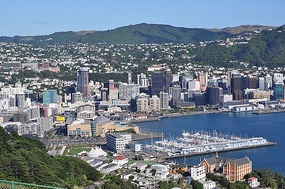
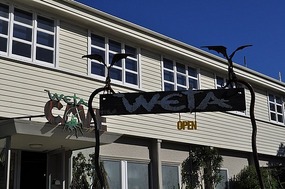
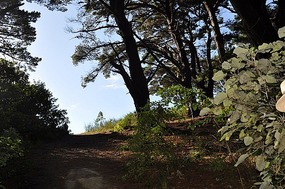
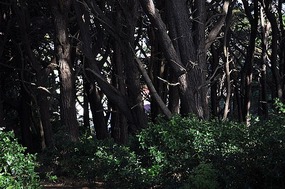
















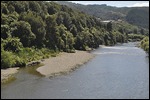

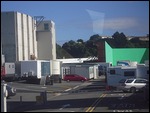
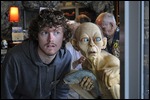
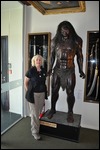
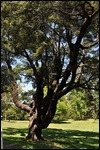
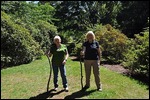
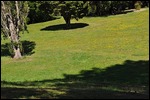
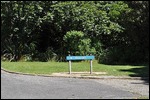
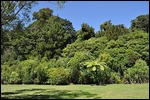
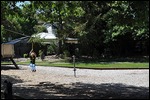
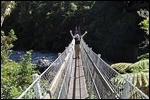

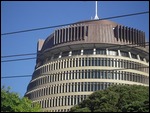
Marty
2011-02-18
Ahhhhh, a nice refreshing read after a 'full moon Friday". Thanks for taking me out of Clinton! Keep 'em coming, Marion.
Marty